V0377 Bootis - Aug. 8, 2021
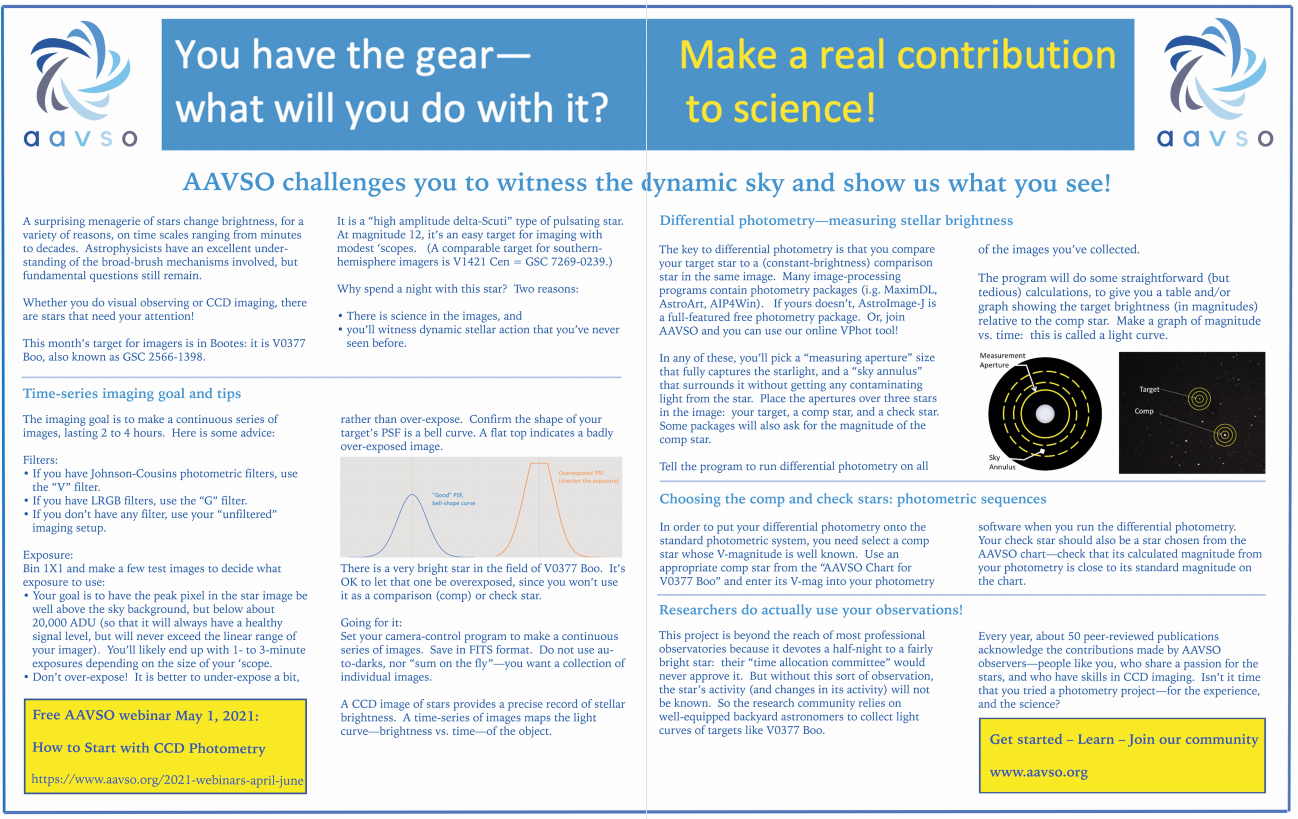
This is the AAVSO ad that appeared in Astronomy Technology Today that got me interested in V0377 Boo. Click on the image to bring up a larger copy in a new window. There is lots of great information here about how to measure the star using differential photometry. I already had the equipment and software needed and decided to give it a try.
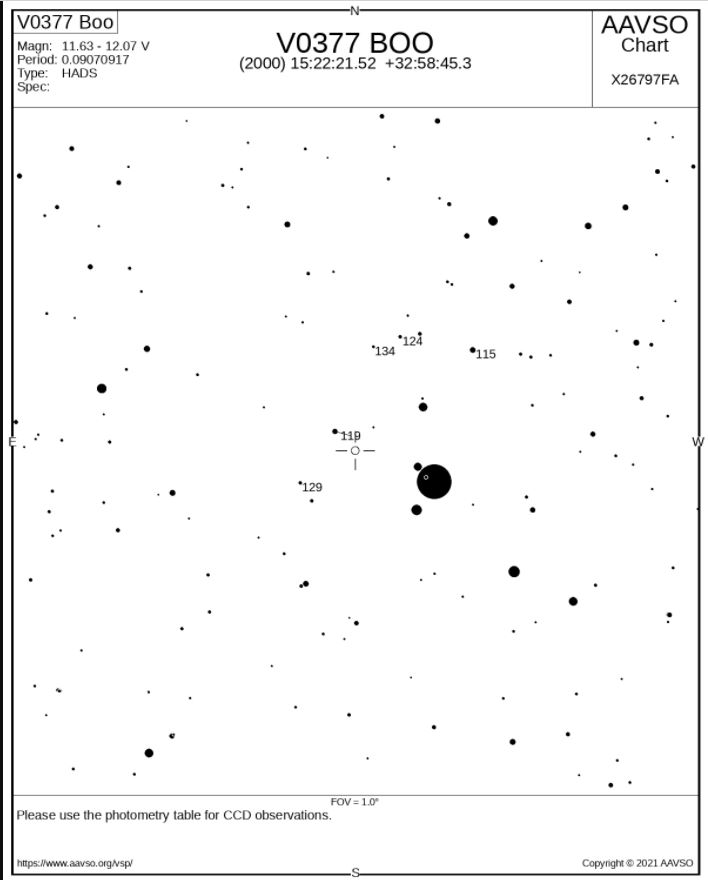
This is the AAVSO finder chart showing the variable which is circled and with tic marks.
Reference stars with magnitudes (without the decimal point) are also shown.
All I needed to do was to wait for some decent weather in July and August.
That took about a month!
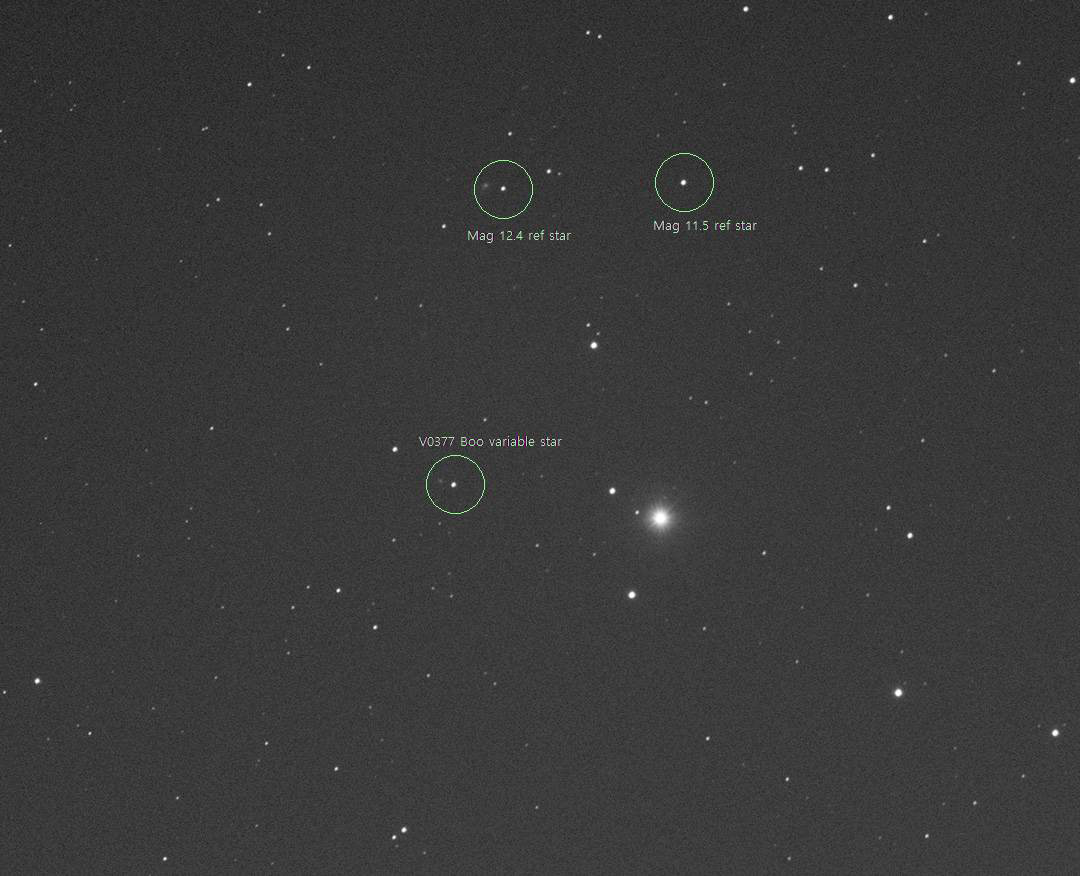
On Sunday Aug. 8, I spent time photographing V0377.
I took 48 separate 30 second exposures separated by 90 seconds for a total of
96 minutes until my target star moved into the trees.
I used my 4" Televue Genesis refractor and a ZWO ASI1600mm mono camera with a green filter.
From these 48 photos, I created this annotated image of V0377 Bootis
to show an overall view of the area.
It was cropped to match the AAVSO finder chart displayed above.
I also showed which reference stars I used and V0377 itself for the photometry to come.
Note that the 12.4 reference star and V0377 Boo have faint 14th and 15th galaxies next to them.
V0377 Boo is a "high magnitude delta-Scuti" type of variable star with a magnitude around 12.
Click on the image for a larger view.
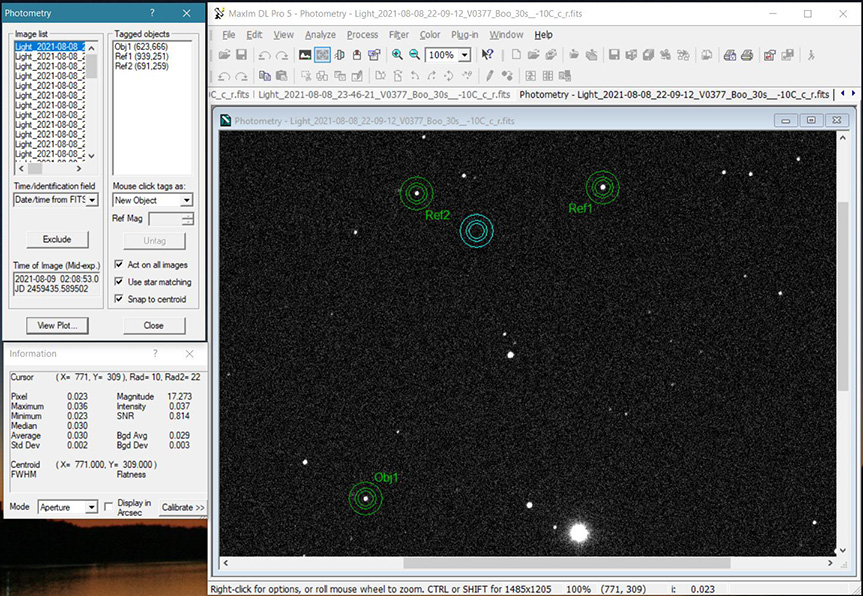
This screenshot shows the process of measuring the variable star in relation to the reference stars using MaximDL 5's Photometry tool. It analyzed all 48 of the images I took (which were previously registered) and determined a brightness for V0377 Boo on each. The results were saved into a csv file for later graphing. You can click on the image to get a larger view in a new window.
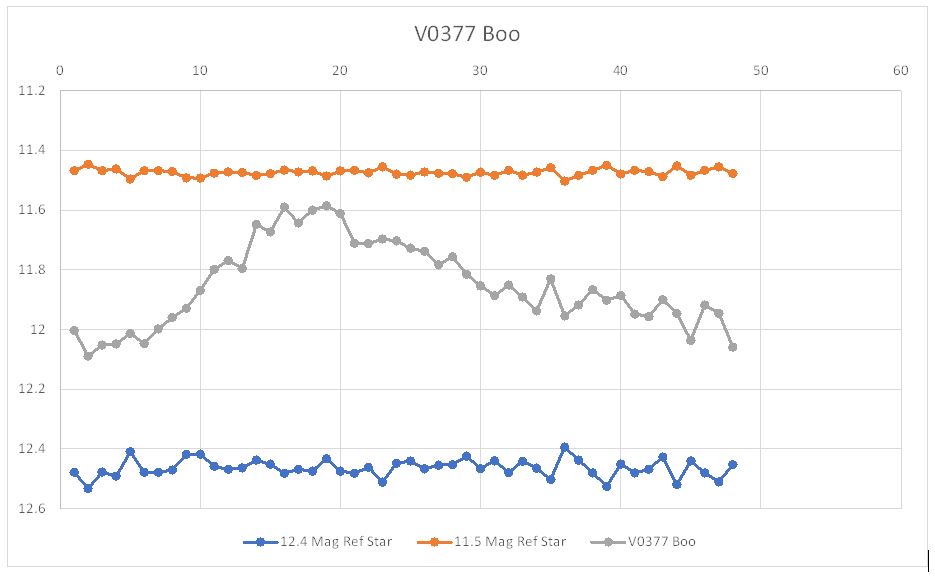
Here is the light curve I got from my experiment. It was generated from the MaximDL 5 photometry tool csv file and imported into an Excel spreadsheet then graphed. You can see V0377 Boo in gray varying from around magnitude 12.1 at the start to around magnitude 11.6 at it's peak brightness. The other two reference stars stayed relatively constant during my photo session. This agrees very well with the AAVSO's published magnitude range of 11.63 to 12.07 over a 2 hour time frame.
Image details:
Date/Time: Sunday August 8, 2021 from 10:09 pm until 11:50 pm
Location: Cary, NC in my front yard
Camera: ASI1600mm-pro gain:139
Exposures: 48 x 30 sec
Filter: Optolong green
Scope: TeleVue Genesis refractor 4" f/5
Mount: iOptron GEM-45
Guider: Orion 60mm finder-guider
Capture software: APT
Guiding software: PHD2
Processing software: Pixinsight, MaximDL 5, and Photoshop.
Pixinsight was used to calibrate the lights, darks, and flats.
MaximDL was used to do the photometry.
Back to the top of the page
Back to Mark's Astrophotography Home